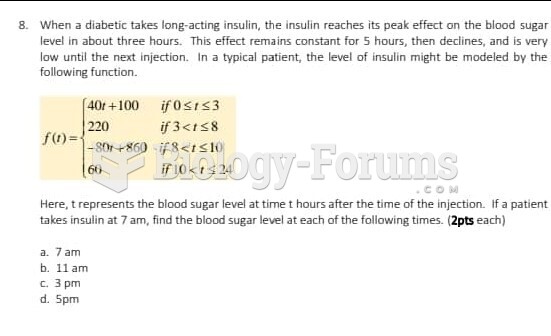|
|
|
The average office desk has 400 times more bacteria on it than a toilet.
Individuals are never “cured” of addictions. Instead, they learn how to manage their disease to lead healthy, balanced lives.
More than 4.4billion prescriptions were dispensed within the United States in 2016.
Although the Roman numeral for the number 4 has always been taught to have been "IV," according to historians, the ancient Romans probably used "IIII" most of the time. This is partially backed up by the fact that early grandfather clocks displayed IIII for the number 4 instead of IV. Early clockmakers apparently thought that the IIII balanced out the VIII (used for the number 8) on the clock face and that it just looked better.
The U.S. Pharmacopeia Medication Errors Reporting Program states that approximately 50% of all medication errors involve insulin.
 Checking the 5 volt reference from the computer being applied to the TP sensor with the ignition ...
Checking the 5 volt reference from the computer being applied to the TP sensor with the ignition ...
 A vacuum-operated EGR valve. The vacuum to the EGR valve is computer controlled by the EGR valve ...
A vacuum-operated EGR valve. The vacuum to the EGR valve is computer controlled by the EGR valve ...





